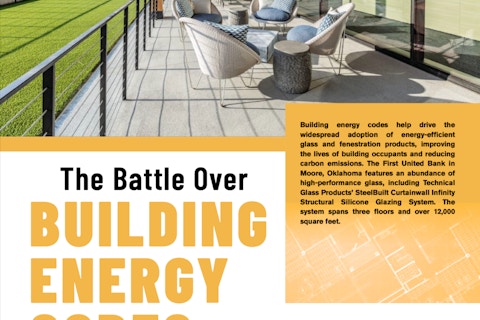Resilient SKINS: Bending with the Wind
Editor’s note: If nothing else, please read Ted Kesik’s original article for this issue of SKINS—Facade futures: Building resilience is skin deep, the first feature and further discussed following. It’s brilliant, and a must-read!
The deadline for submitting your outstanding projects and candidates for the Vitruvian Honors & Awards program is fast approaching! Anyone can nominate and/or submit and submittal requirements are quick and easy. The program celebrates all players involved: owners, designers, engineers, consultants, contractors, fabricators, material suppliers—even the unsung heroes! If you know of or participated in an outstanding project you’d like to nominate or submit, reach out to us here awards@facadetectonics.org or submit through the website. With innovation, collaboration, and sustainability as core evaluation criteria, a Vitruvian Honor is the highest recognition of excellence in the global building industry.
Are you resilient? Do you bend to the winds of change or do you resist? Do you bounce back from adversity or is your recovery long, slow, and incomplete? Do you readily adopt lifestyle changes in response to personal health, economic, or environmental challenges, or is your response one of denial?

Resilience is the capacity to yield to extreme events in a manner that facilitates a quick recovery with minimal consequences.
How about the buildings you’ve worked on? How do they behave when the lights go out? Do they continue to protect the health and welfare of the occupants during weather extremes? Are their supply chains flexible enough to accommodate speedy repairs in the wake of damaging events? Do they possess the adaptive capacity to avoid premature obsolescence? Will they continue to support the needs of users through the decades and looming uncertainties of climate and social change?
Resilience is one of these concepts that we think we understand, but that understanding is not shared amongst us; we are all carrying different notions of just what resilience is. And our belief that we understand, limits our ability to learn more fully. We are still, as an industry, digesting the messages that resilience is sending our way (as we are with sustainability and embodied carbon) and we have yet to converge on a shared definition. These concepts are like onions, we peel back a layer and think we are done, but we soon recognize another layer, and yet another.
I well remember when resilience first emerged in the building vernacular (circa. 2010, but with term roots in the social and ecological sciences well before that). It was heralded in popular media as the “new green” or the “new sustainability.” We have a way with words in the building community, a way of obfuscating the meaning to the point of irrelevance, this to the great detriment of communication within our industry. How can we effectively talk about resilience or sustainability when it means something different to each of us? Yet we blather away under the illusion of shared meaning and the notion that we are communicating. Little wonder that so many pursuits in the name of sustainability turn out to be mere greenwash. Instead of doing the work to converge on a definition of critical concepts we jump to the next popular term and go to work on obliterating what that term means.
I grew interested in understanding these critical concepts of sustainability and resilience and the relationship between them. I did a deep dive on this as part of a personal research effort. It pulled me deeper than I’d ever intended or imagined! In the process, I encountered the works of Ted Kesik, a building scientist at the University of Toronto, currently a Fellow of the Facade Tectonics Institute, and the guest editor of this month's resilience-themed issue of SKINS. This encounter changed everything for me and I’ve never left him alone since. Ted selected this month’s theme, curated the issue, and penned the lead article. He intended his article as the introduction to the newsletter, but I felt it was too important for that, it needed to be featured. So, I talked Ted into that change by volunteering to author this brief introduction myself.
Ted has gifted us with a concise contemporary framing of resilience and buildings, and goes on to discuss the critical role of the facade system. He describes the balancing act in critical design objectives between carbon footprint reduction and enhanced resilience. He nails the relationship between sustainability and resilience and looks at the influence of resilience considerations on future building and facade system design, suggesting that it will compare in sophistication and cost effectiveness to the seismic design of building structures (at the very least). It’s a must read!
Ted selected a number and variety of helpful resilience resources or those of us wrestling with resilience considerations in our project work. There were more than we could feature in this issue, but we’ve included a table reference of these resources following. We selected from among these to populate the features in this issue of SKINS.
Ted comments:
About the Selected Resilience Resources
A number of helpful resilience resources are referenced in this issue of SKINS. The first one is a Resilience Planning Guide that provides a concise overview of the field in general. It is paired with a Thermal Resilience Design Guide that is intended to address the design of skins (enclosures) for enhanced passive habitability. All the resources that follow represent a variety of perspectives on resilience ranging across diverse but related topics such as cyber-physical security, fire safety, flood protection, overheating and extreme heat resilience, and the embodied carbon of resilient, high-performance façades.
Following is the complete list of resources provided by Ted.
Topic | Type | Keyword | URL |
|---|---|---|---|
Building resilience Ted Kesik | Planning Guide | Resilience | |
Facade resilience Ted Kesik | Design Guide | Thermal resilience | |
CTBUH Study on Cyclones in Asia | CTBUH study | Hurricane/cyclone | |
NIST study on fire protection | NIST | Fire | |
Homeland Security/physical security | DHS | Physical security | Physical Security and Critical Infrastructure Resilience | Homeland Security (dhs.gov) |
Cybersecurity | Security mag | Cyberattack | Cyber-physical security in an interconnected world | Security Magazine |
Floods | City of NY | Floods | |
Resiliency design | City of NY | Design | |
Resiliency design | Boston | Policy | Article 37 Green Building Guidelines | Boston Planning & Development Agency (bostonplans.org) |
Climate resiliency | Global | Guide | A Practical Guide to Climate-resilient Buildings & Communities | UNEP - UN Environment Programme |
Intact Centre for Climate Adaptation | Guides | Climate adaptation | |
BC Housing | Guide | Overheating and air quality | https://www.bchousing.org/publications/BC-Energy-Step-Code-Guide-Supplemental.pdf |
BC Housing | Slide deck | Extreme heat resilience | https://www.bchousing.org/publications/Extreme-Heat-Webinar-Slide-Deck-July-7-2020.pdf |
Resilience Design Institute | Web site |
| |
Rocky Mountain Institute | Report | Deep energy retrofits | https://rmi.org/insight/transforming-existing-buildings-from-climate-liabilities-to-climate-assets/ |
Stockholm Resilience Centre | Report | Resilience design | |
Canadian Architect | Article | Embodied carbon of high-performance facades | https://www.canadianarchitect.com/technical-mass-timber-through-a-life-cycle-lens/ |
Arup & Saint-Gobain Glass | Report | Carbon footprint of façades: significance of glass | https://www.arup.com/-/media/arup/files/publications/a/arup-sgg---carbon-footprint-of-facades.pdf |
FTI intends to build on this valuable listing and make it available on an ongoing basis on our website as a freely available resource, consistent with our mission, to the building and facades community. If you are aware of additional resources that we should include, please forward them to mpatterson@facadetectonics.org and we’ll be sure to see that they are added. In addition, as a non-profit volunteer organization we are in need of all the resources we can get—human and financial—to make stuff happen. We encourage you, your colleagues, family and friends, pets and livestock to join us as members of the Facade Tectonics Institute!
Huge thank yous to Ted Kesik for his extraordinary contribution to this issue. He and the SKINS team hope you enjoy it. We welcome your thoughts, compliments, and criticisms. We’d love to hear from you.
And we wish you all the best!
Great thanks from all of us at
The SKINS Team:
Mic Patterson, Facade Tectonics Institute
Executive Editor
Val Block, Facade Tectonics Institute
Associate Editor
Betsy Covington, Technoform
Content Editor
Katie Gould, Enclos
Creative Director
Alberto Alarcon, Kuraray
Social Media & Events Calendar Editor
If you would like to join the SKINS team, let us know at skins@facadetectonics.org. There is much to do!

Mic Patterson, PhD LEED AP+
Ambassador of Innovation & Collaboration
Facade Tectonics Institute
Looking for something specific?
Search our extensive library.
FTI’s SKINS email is the central source for the latest in building skin trends and research.
All emails include an unsubscribe link. You may opt out at any time. See our privacy policy.









